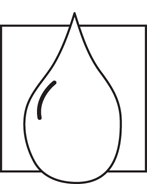
Water Skin
Why Does Water Form a Surface?
Materials
- plate
- penny
- eye dropper
- tap water
- small container or bowl
Try This
- Place the penny on the plate.
- Fill the container with tap water.
- Using the eye dropper, add a drop of water at a time to the top of the penny, trying to keep the water from spilling over the sides of the penny.
- When the water has filled the top of the penny, look closely at the water on the penny from the side and top. Notice the water at the penny's edge. See how many more drops of water you can gently add before the water spills over the side.
What's Going On?
When you looked at the penny from the side, you noticed a bulge over the top of the water. The water came up over the rim of the penny but did not spill over the sides. The force holding the water in place is known as surface tension. Water molecules are attracted to one another and tend to hold together, even more so at the surface, so that there is a thin, invisible “skin” on top of the surface of water. Some insects are able to walk on water because they use the water's surface tension for support.
